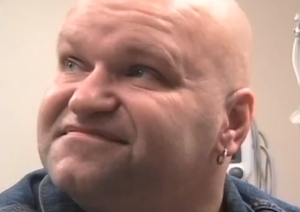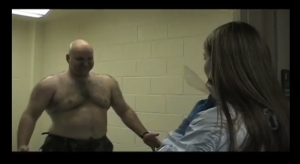The Affordability of Compassion
To a great extent, the ability of a society to contain its pathology, and the disposition of its problems, is dependent on what it convinces itself it can afford.
Shown below are two short teaching fables “Big Orange” and “The Take Down” that I use to train our health care providers about the incorrect and safer ways to contain violent, pathological behavior. I created these videos because of the huge number of cases involving violent behavior that health care personnel must manage…several assaults against nurses and doctors each year. A few deaths. Violent psychotic patients are injured as well.
Big Orange: http://www.youtube.com/watch?v=8rzKcw-KdMo
The Take Down: http://www.youtube.com/watch?v=ZtV2o-ALk7U
Beyond “technique” and patient-safe methodology, what is most important to me in this set of circumstances, and what we wanted to also convey, is that when there is danger or the potential for violence that cannot be premtively contained, the psychotic-sociopathic person must be subdued/controlled in a compassionate manner. Judgement is rank in the first “method” and suspended by the health care team in the second vignette. In “The Take Down”, the team members take appropriate precautions, attempt to reason with the patient, attempt to de-escalate the tension, utilizes a “show of force” as a final step, prepares appropriately via assignments, and carries out the process methodically. It then utilizes a post-event briefing to learn how they might have done it better. The methodology depicted in the second video works because the economy of situation – its setting and resources – allows for that safe, compassionate disposition, and the culture/society/community we currently live in wills it.
And then I think about Emmy and Isaac in Widow Walk – the conveniences affordable to them in those lean and daunting pioneer days were meager, even though this family itself was prospering. What they could accomplish was dependent on self and neighborly help, purposeful ingenuity and enterprise. The territorial government had limited resources that were stretched and frayed. In the confrontation and disposition of societal assault, it is easy to understand that the final scenes, in the final chapters of Widow Walk depict the only practical solution in our nineteenth century pioneer story. What makes the couple heroic was their courage to go out to the periphery. What makes Emmy particularly heroic, albeit very plausible, was her decision to do what was necessary to go beyond the periphery to recover that which was fundamentally the most important things remaining in her family’s existence.
We continue to live in a time of monsters and heroes, molesters and heroines. Let us continue to pray that the degree of our society’s compassion shall always be afforded surplus for the extent of our collective sins.

